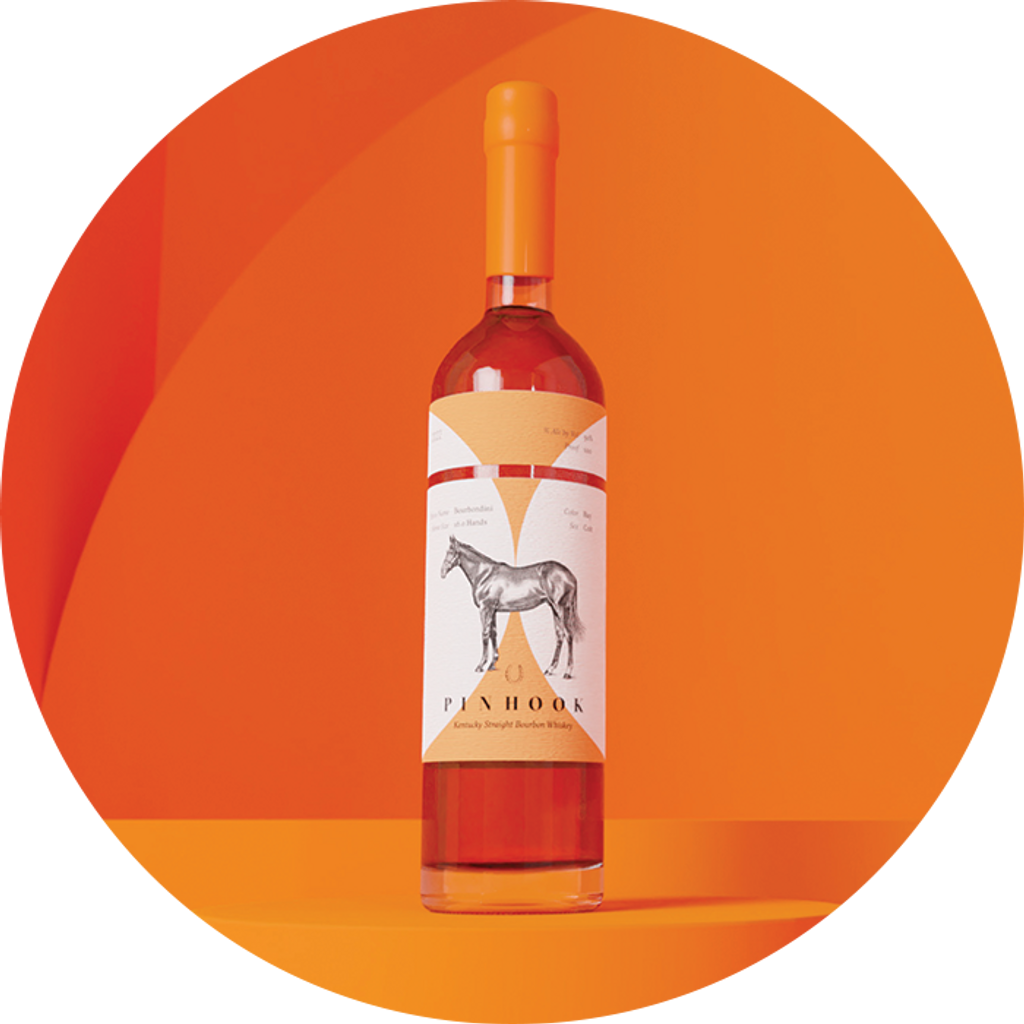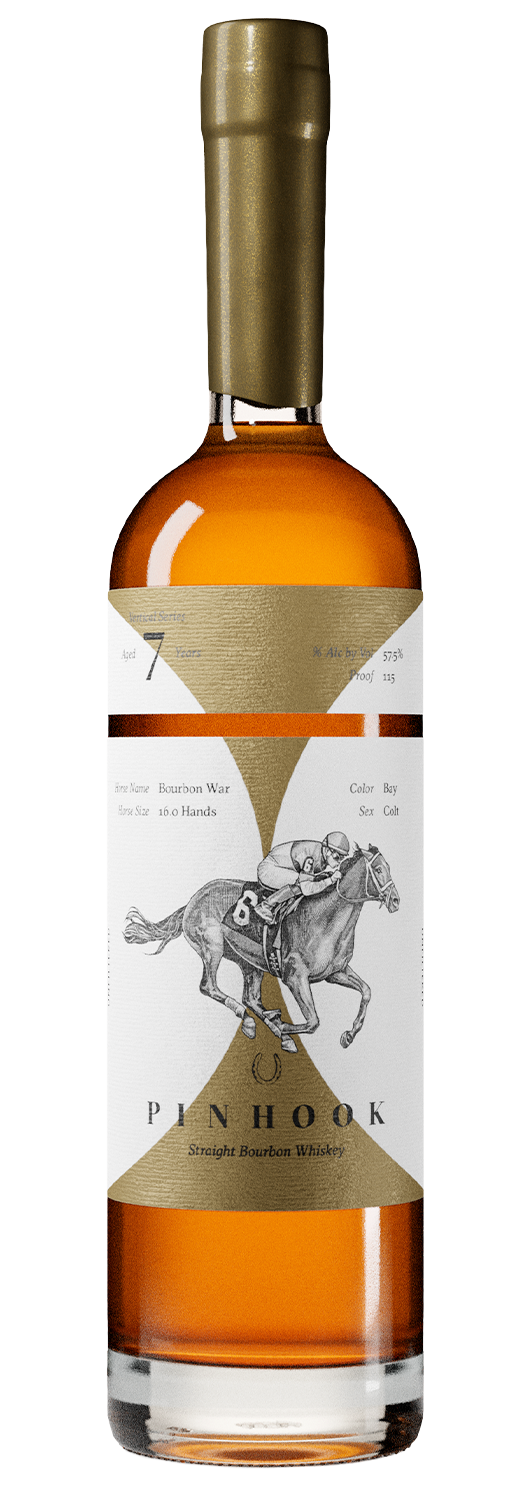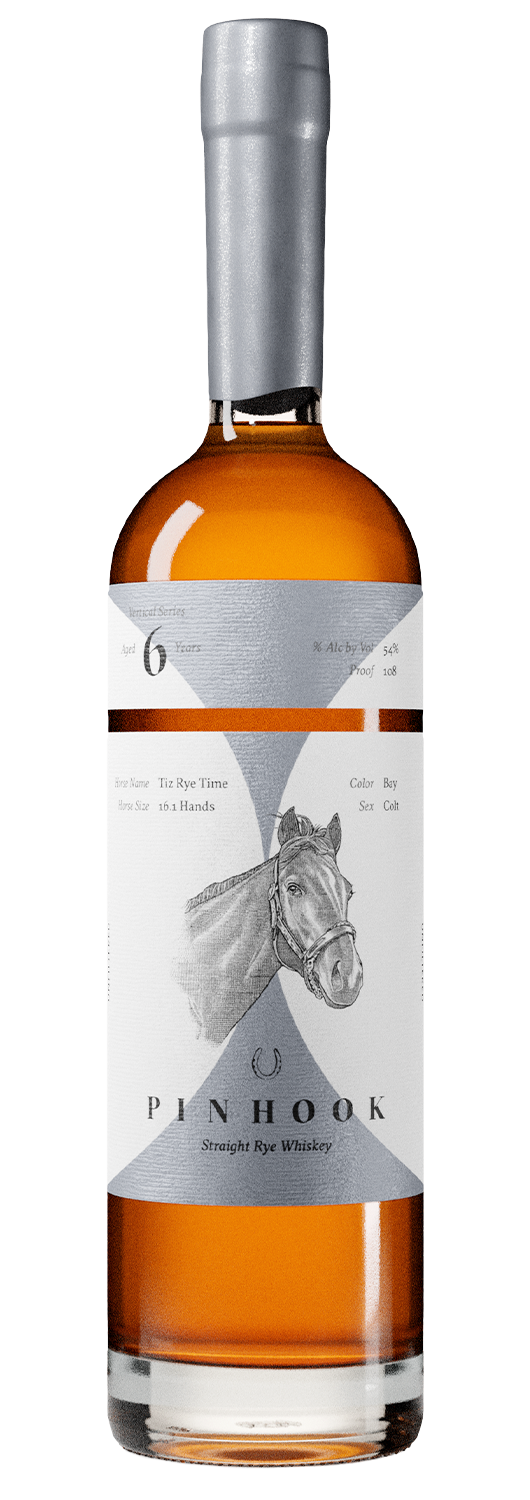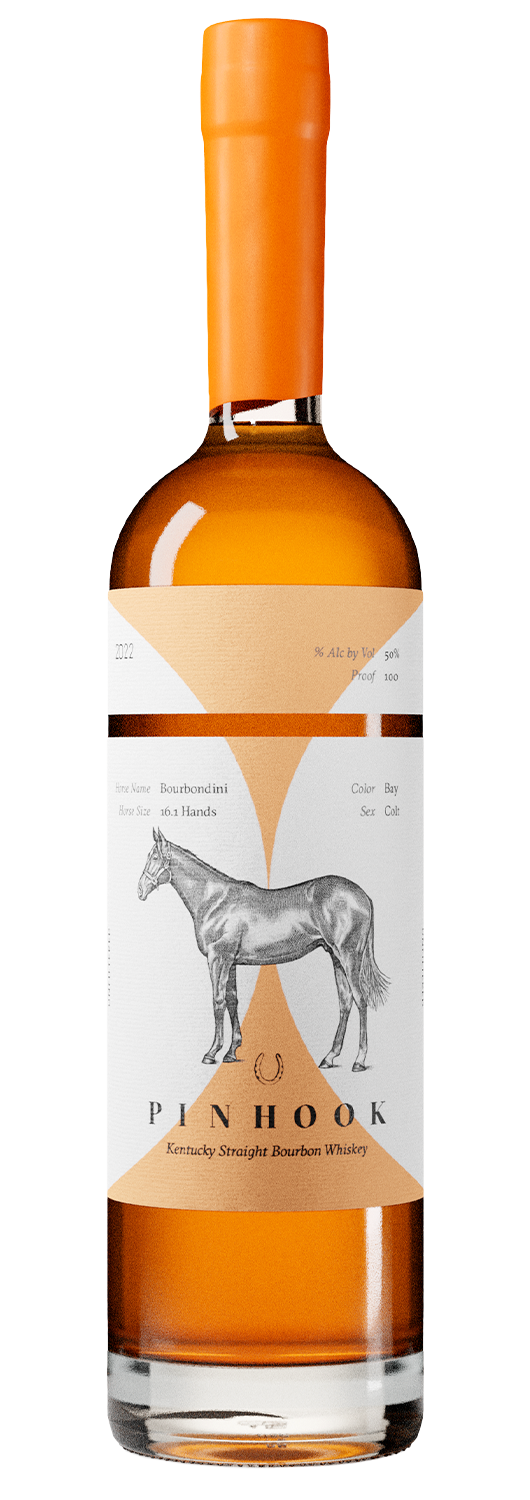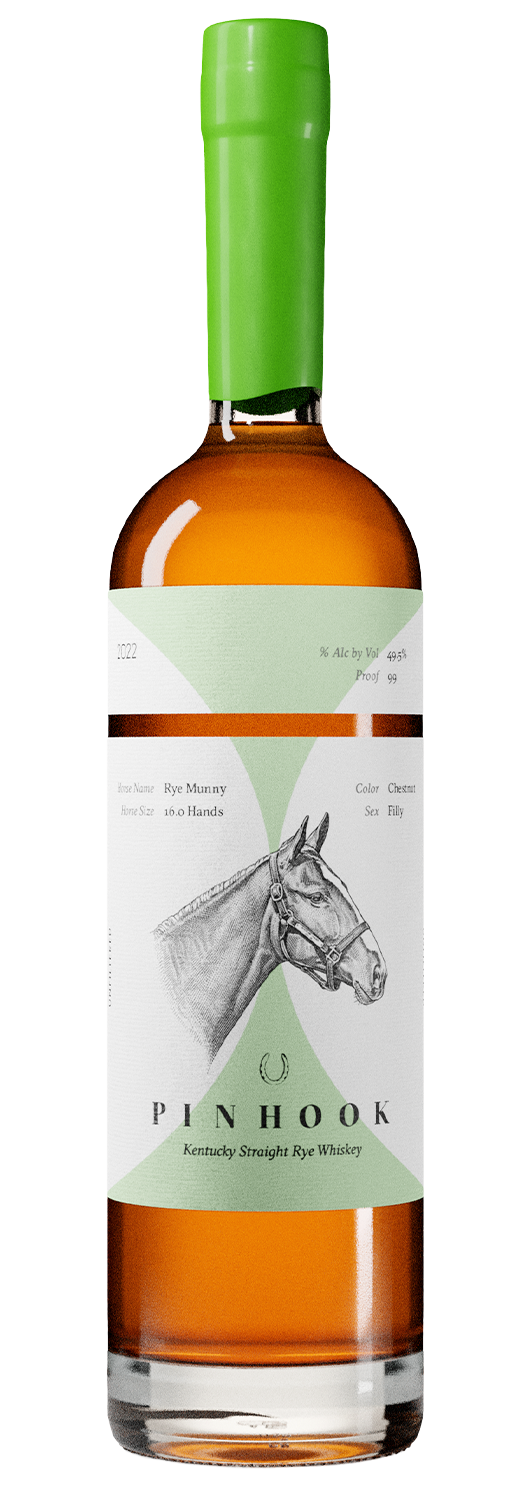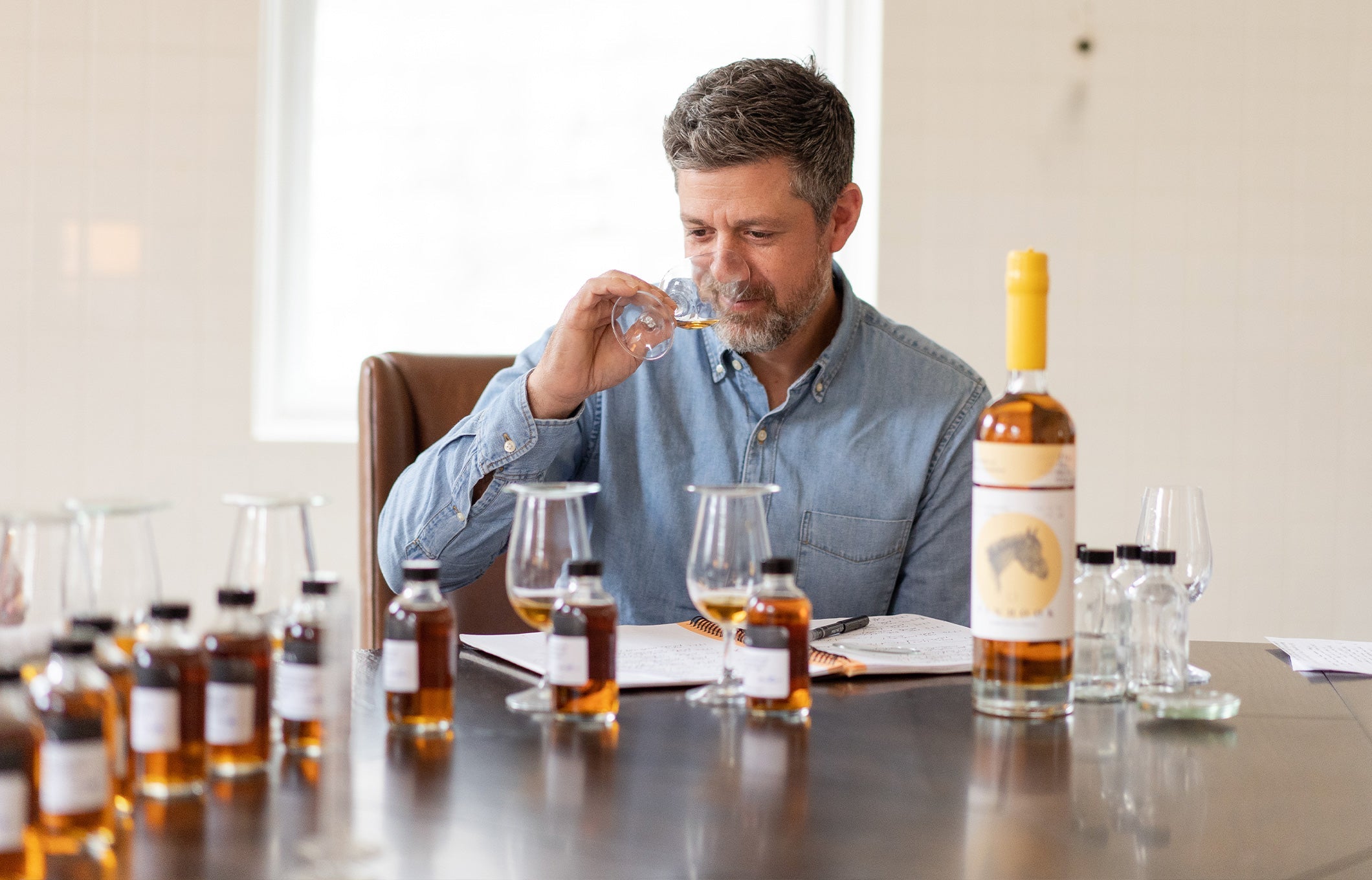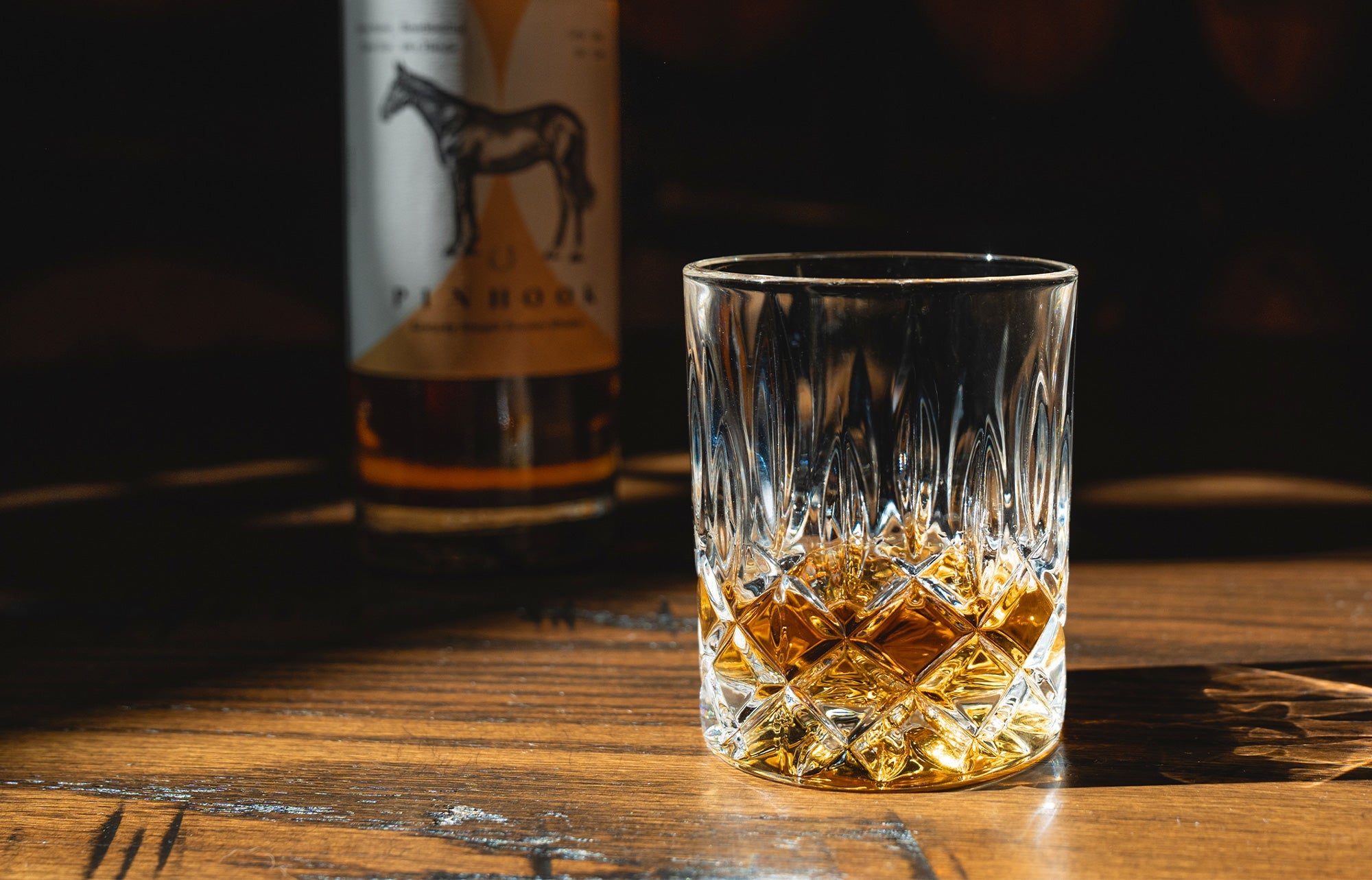
The world of whiskey can be a complicated one, with a unique set of terms that at first blush can seem like a tangled web of gibberish. Arm yourself with the vocabulary, though, and the intrigue of bourbon and rye comes into delightful focus. And of course, at Pinhook we hope to make this world of American whiskey not only accessible but fun. In that spirit, we’ve put together this list of terms to help demystify whiskey’s production, taste, and categorization.
Alcohol Integration: The extent to which the alcohol in a whiskey carries other flavors to the palate, rather than serving as a flavor in and of itself.
Angel’s Share: The alcohol that evaporates from the barrel as it ages–equivalent to about 2 percent of a barrel’s contents each year.
Barrel Proof: The alcohol level of a spirit when it comes out of the barrel. If a whiskey is bottled without dilution, it is bottled at barrel proof. Also referred to as “cask strength.”
Blend: The whiskey that results from the contents of any number of barrels being mixed together. All whiskeys have a blend, with the exception of single barrel releases. Note, however, that the term “blended whiskey” refers to whiskeys blended with different types of whiskey (or in the case of cheap American blended whiskeys, whiskey and another type of alcohol).
Bottled in Bond: American whiskey produced and bottled in compliance with regulations set forth by the Bottled in Bond Act of 1897 qualifies as bottled in bond. The act was created to set a standard for quality and protect consumers from imitation whiskey manipulated with artificial flavors, coloring, and even other spirits. To achieve bottled-in-bond status, an American whiskey must: be distilled by a single distiller at a single distillery over the course of a single season; be aged in a bonded, or government-sanctioned, warehouse for at least four years; be bottled at 100 proof (50 percent alcohol by volume); and display the distillery and bottling location on the label.
Bottling Proof: The proof, aka level of alcohol content, at which a whiskey goes into the bottle for eventual consumption.
Cask Strength: The alcohol level of a spirit when it comes out of the barrel. If a whiskey is bottled without dilution, it is bottled at cask strength (like our 2022 Vertical Series Bourbon). Also referred to as “barrel proof.”
Char Level: Before whiskey goes into them, oak barrels are charred in order to enable the flavors of the wood to more readily transfer to the liquid. The longer the flame touches them, the higher the char level. Bourbon is usually aged in Char No. 3 or Char No. 4 barrels.
Chill Filtration: The standard process by which whiskey is lowered to a temperature just below freezing, at which point the fats and other elements in it clump together and can be filtered out of the liquid, resulting in a clearer-looking whiskey.
Cooperage: A business or place that crafts oak barrels in which whiskey is aged.
Expression: A new version of a whiskey. The 2022 release of a brand’s flagship bourbon, for example, would be an expression of that bourbon.
Fermentation: The process by which a mashbill’s sugars are turned into alcohol, via the addition of yeast. Fermentation usually takes place in large round vats called fermenters.
Finish: The flavors that linger after a sip of whiskey. A short finish means that the flavors disappear quickly. A long finish means that the tastes linger well after the sip.
Flavor Profile: The range of flavors and aromas that make up the overall taste of a whiskey.
Mash: The mix of grains and water that will be fermented as the first step in whiskey production.
Mashbill: The ratio of grains that go into the recipe for a particular whiskey. (Bourbon’s mashbill must have at least 51 percent corn, rye’s at least 51 percent rye.)
Nose: The elements in a whiskey’s flavor profile that arise from its aroma.
Palate: A drinker’s complete sense of taste. Whiskey must appeal to the palate in order to be appreciated.
Proof: A number equal to double the percentage of alcohol content in a liquor. A whiskey that is 45 percent alcohol by volume is 90 proof. The terms originated when the alcohol level of liquor used to be tested by lighting it on fire. If it ignited, it proved itself. If it didn’t, its alcohol content was deemed insufficient.
Rickhouse: A warehouse for storing and aging whiskey in which the barrels are stacked three high, on their sides, onto special racks called “ricks.”
Single Barrel: A single barrel whiskey is bottled from the contents of just one individual barrel, whereas most whiskeys are bottled from a “batch” of many barrels.
Small Batch: Refers to whiskeys blended from a small number of barrels (although there is no official designation).
Sour Mash: A mash created by adding spent mash from a previous distillation, to help start the fermentation process. Most American whiskeys use the sour mash process.
Still: The contraption in which fermented mash, or mash beer, is heated in order to separate the alcohol from water and other elements. There are two primary types of still, the pot still and the column still, the most important difference between them being that a pot still can only produce one batch at a time, while the column still can produce alcohol continuously, and is thus more commonly used in commercial production.
Straight Whiskey: Legally in America, this term simply indicates that a whiskey has been aged in a new charred oak barrel for at least two years.
Tasting Notes: A breakdown of the aromas and tastes that collectively comprise the flavor profile of a whiskey.
Unfiltered: Most bourbons are chill-filtered to remove oils and fats that can make the liquid look less pristine, but the process also removes some of the whiskey’s flavor. Unfiltered bourbon leaves everything in the liquid, including a fuller taste.
White Dog: The clear alcohol that comes out of the still, before it is aged in barrels, which is what gives whiskey its dark color (and much of its flavor).
Wort: The liquid extracted from mashed grains containing sugars that will eventually be fermented in order to produce alcohol.
